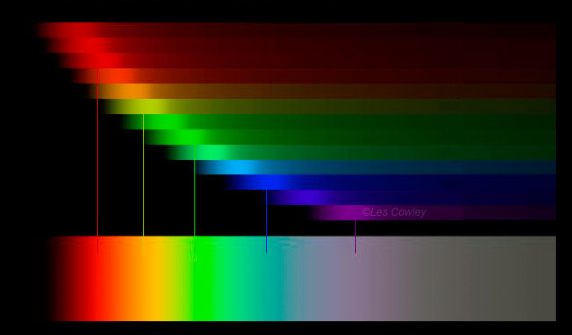OPOD - Rainbow Colours
OPOD - Rainbow Colors: A Detailed Exploration
Rainbows are a captivating and awe-inspiring natural phenomenon that never fails to mesmerize us. The vibrant colors that adorn the sky during a rainbow are a visual treat for the eyes. But have you ever wondered why rainbows exhibit such a beautiful spectrum of colors? In this article, we will delve deeper into the science behind rainbow colors and uncover some fascinating details.
The brightness of rainbow colors is determined by the size of raindrops. Large raindrops produce the most intense colors, but they should not be too large to retain their spherical shape. Red light, being refracted the least, forms the largest rainbow arc. If you look closely, you'll notice that the red light appears in the sky as a disk with a relatively sharp edge. However, due to the angular size of the sun (which is about 0.5°), the edge of the disk appears slightly blurred. As we move towards the center of the rainbow, the disk gradually dims away.
Each color in the rainbow has a different disk size. The shorter wavelength colors have smaller disks compared to the longer wavelength colors. As a result, when the disks overlap, each color, except for extreme red, contains a mixture of longer wavelength hues. This blending of colors creates the mesmerizing and harmonious transition between different hues in a rainbow.
To better understand the intensity of rainbow colors, scientists have calculated rainbow intensity profiles for various colors. The profiles indicate how the intensity of each color changes across the arc of the rainbow. By analyzing these profiles, researchers can gain insights into the distribution and interplay of different wavelengths within a rainbow. For instance, the lower full-color profile is obtained by computing profiles for hundreds of colors and then combining them based on their spectral intensity at Earth's surface.
Inside the bow, where all the colors completely overlap, white light is formed. This occurrence is known as "supernumerary bows" and can be observed in certain conditions. Supernumerary bows are faint, closely spaced arcs that appear just inside the main rainbow. They are caused by interference between light waves as they pass through the raindrops, resulting in the formation of additional bands of colors. The presence of supernumerary bows further enhances the beauty and complexity of rainbows.
Brigitta Sipocz's stunning photographs capture the essence of rainbow colors and their intricate details. These images not only showcase the vivid hues but also provide a glimpse of the white light within the bow. The interplay of light and water droplets in creating this magical phenomenon is truly remarkable.
In conclusion, the captivating colors of a rainbow are a result of the refraction and dispersion of sunlight through raindrops. The size of the raindrops determines the intensity and size of each color disk, with red being the largest. The overlapping of these disks creates the smooth transition between different hues. Additionally, the presence of supernumerary bows adds an extra layer of intricacy to the overall spectacle. Next time you witness a rainbow, take a moment to appreciate the scientific marvel behind its breathtaking colors.

Grand Canyon Bows
Primary and secondary rainbows captured from the South Rim by Brigitta Sipocz. ©Brigitta Sipocz, shown with permission.

The brightest rainbow colours are produced by large raindrops, but not so large that they lose their sphericity. Red light is refracted least and forms the largest rainbow. Its light appears in the sky as a disk with a fairly sharp edge – only fairly sharp because the 0.5° angular size of the sun blurs it. The disk dims away towards the bow’s centre.
Successive shorter wavelength colours have smaller and smaller disks. The disks overlap and each colour except extreme red has mixed with it some longer wavelength hues.
At right are calculated rainbow intensity profiles for a few colours. The lower full colour profile was made by computing profiles for hundreds of colours, weighting each by its spectral intensity at Earth’s surface and then adding them all together.
Inside the bow, where the colours completely overlap, there is white light. Brigitta’s two pictures show it also.

Note: this article has been automatically converted from the old site and may not appear as intended. You can find the original article here.
Reference Atmospheric Optics
If you use any of the definitions, information, or data presented on Atmospheric Optics, please copy the link or reference below to properly credit us as the reference source. Thank you!
-
<a href="https://atoptics.co.uk/blog/opod-rainbow-colours-2/">OPOD - Rainbow Colours</a>
-
"OPOD - Rainbow Colours". Atmospheric Optics. Accessed on November 26, 2024. https://atoptics.co.uk/blog/opod-rainbow-colours-2/.
-
"OPOD - Rainbow Colours". Atmospheric Optics, https://atoptics.co.uk/blog/opod-rainbow-colours-2/. Accessed 26 November, 2024
-
OPOD - Rainbow Colours. Atmospheric Optics. Retrieved from https://atoptics.co.uk/blog/opod-rainbow-colours-2/.